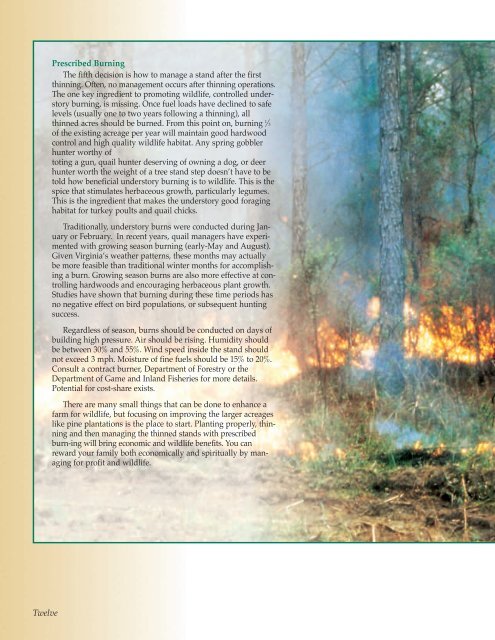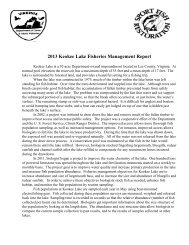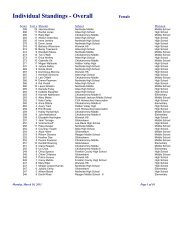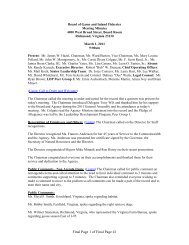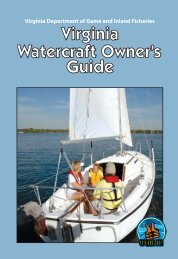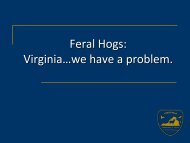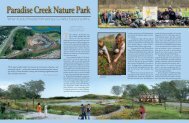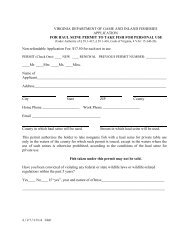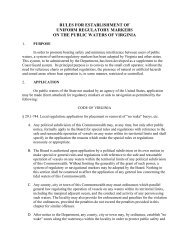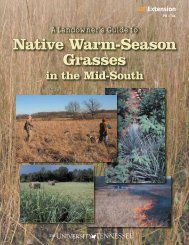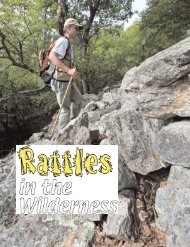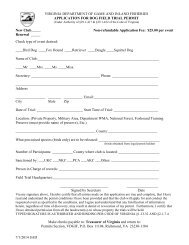Managing Pines for Profit and Wildlife - Virginia Department of ...
Managing Pines for Profit and Wildlife - Virginia Department of ...
Managing Pines for Profit and Wildlife - Virginia Department of ...
You also want an ePaper? Increase the reach of your titles
YUMPU automatically turns print PDFs into web optimized ePapers that Google loves.
Prescribed BurningThe fifth decision is how to manage a st<strong>and</strong> after the firstthinning. Often, no management occurs after thinning operations.The one key ingredient to promoting wildlife, controlled understoryburning, is missing. Once fuel loads have declined to safelevels (usually one to two years following a thinning), allthinned acres should be burned. From this point on, burning 1 ⁄3<strong>of</strong> the existing acreage per year will maintain good hardwoodcontrol <strong>and</strong> high quality wildlife habitat. Any spring gobblerhunter worthy <strong>of</strong>toting a gun, quail hunter deserving <strong>of</strong> owning a dog, or deerhunter worth the weight <strong>of</strong> a tree st<strong>and</strong> step doesn’t have to betold how beneficial understory burning is to wildlife. This is thespice that stimulates herbaceous growth, particularly legumes.This is the ingredient that makes the understory good <strong>for</strong>aginghabitat <strong>for</strong> turkey poults <strong>and</strong> quail chicks.Traditionally, understory burns were conducted during Januaryor February. In recent years, quail managers have experimentedwith growing season burning (early-May <strong>and</strong> August).Given <strong>Virginia</strong>’s weather patterns, these months may actuallybe more feasible than traditional winter months <strong>for</strong> accomplishinga burn. Growing season burns are also more effective at controllinghardwoods <strong>and</strong> encouraging herbaceous plant growth.Studies have shown that burning during these time periods hasno negative effect on bird populations, or subsequent huntingsuccess.Regardless <strong>of</strong> season, burns should be conducted on days <strong>of</strong>building high pressure. Air should be rising. Humidity shouldbe between 30% <strong>and</strong> 55%. Wind speed inside the st<strong>and</strong> shouldnot exceed 3 mph. Moisture <strong>of</strong> fine fuels should be 15% to 20%.Consult a contract burner, <strong>Department</strong> <strong>of</strong> Forestry or the<strong>Department</strong> <strong>of</strong> Game <strong>and</strong> Inl<strong>and</strong> Fisheries <strong>for</strong> more details.Potential <strong>for</strong> cost-share exists.There are many small things that can be done to enhance afarm <strong>for</strong> wildlife, but focusing on improving the larger acreageslike pine plantations is the place to start. Planting properly, thinning<strong>and</strong> then managing the thinned st<strong>and</strong>s with prescribedburn-ing will bring economic <strong>and</strong> wildlife benefits. You canreward your family both economically <strong>and</strong> spiritually by managing<strong>for</strong> pr<strong>of</strong>it <strong>and</strong> wildlife.Twelve


